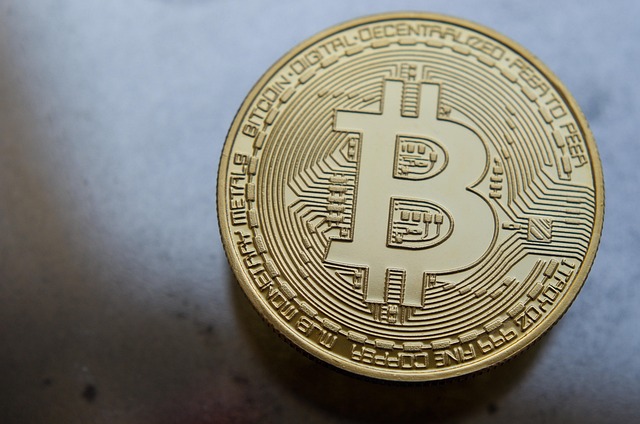Bingx Futures Trading Fees in 2025: An In-Depth Review
Author: Jameson Richman Expert
Published On: 2025-08-19
Prepared by Jameson Richman and our team of experts with over a decade of experience in cryptocurrency and digital asset analysis. Learn more about us.
Understanding Bingx futures trading fees in 2025 is crucial for traders aiming to maximize profitability, optimize their trading strategies, and ensure cost efficiency amidst the rapidly evolving landscape of crypto derivatives. As an experienced trader who has navigated multiple platforms over the years, I recognize that fee structures—though often overlooked—can significantly influence overall trading performance. A comprehensive grasp of these fees enables traders to craft cost-effective strategies, minimize unnecessary expenses, and capitalize on market opportunities. Over time, I’ve encountered various fee models—hidden charges, tiered discounts, promotional offers—and learned that transparency, competitiveness, and adaptable fee management are key for sustained success in crypto futures trading.
My initial experiences with Bingx highlighted how even marginal differences in trading fees could compound into substantial impacts on profitability. I recall instances where narrow profit margins were entirely eroded by unforeseen charges, emphasizing the importance of thoroughly scrutinizing fee policies. Through extensive research, hands-on trading, and ongoing market monitoring, I’ve consolidated insights that are vital for traders in 2025—particularly regarding Bingx’s detailed fee structure, how it compares with industry peers, and effective strategies to reduce trading costs without sacrificing execution quality.

Comprehensive Overview of Bingx Futures Trading Fees
Bingx, a prominent player in the crypto derivatives ecosystem, employs a multi-layered fee system designed to support high-volume traders, incentivize liquidity provision, and foster transparency. Its fee components include:
- Trading Commission (Maker & Taker Fees): These are the primary fees charged on each futures contract execution, typically calculated as a percentage of the notional value. Maker fees are levied when traders add liquidity via limit orders that aren’t immediately filled, while taker fees apply when executing against existing orders—removing liquidity from the order book. In 2025, Bingx’s commissions are notably competitive, with tier-based reductions that reward active traders.
- Funding Fees: Periodic payments exchanged between long and short position holders based on the funding rate—a dynamic indicator influenced by interest rates, market sentiment, and supply-demand imbalances. Funding fees can fluctuate significantly during volatile periods, affecting overall trading costs and requiring strategic timing to manage effectively.
- Withdrawal and Miscellaneous Charges: Fees associated with asset withdrawals, deposits, API access, margin adjustments, or platform-specific features. Bingx emphasizes transparency here, clearly listing applicable fees for each service, allowing traders to plan their capital flows efficiently.
A key feature of Bingx’s fee structure is its tiered system based on monthly trading volume. This approach incentivizes high-frequency and institutional traders, offering reduced rates as trading activity surpasses certain thresholds. For example, traders executing over $1 million monthly can see their fee rates decrease from approximately 0.02% to below 0.01%. Such tiers are comparable to those offered by Binance and Bybit but often provide marginally more favorable conditions for large-volume traders. This transparent tiered approach allows traders to forecast costs accurately and adjust their strategies proactively, ensuring profitability even amid market volatility.
Comparative Analysis with Leading Platforms
Drawing from extensive experience, Bingx’s fee structure maintains a competitive edge—especially for high-turnover traders. Here’s an in-depth comparison with industry leaders:
- Binance: Implements a tiered fee system starting from around 0.1% for spot trading, reducing to as low as 0.02% for high-volume futures traders. Its vast liquidity, global reach, and BNB rebates make it a benchmark. The tiered discounts are highly accessible, especially for traders with substantial monthly volumes. (Register on Binance)
- MEXC: Offers a similar tiered model, with reductions reaching approximately 0.015% for top-tier traders. Known for a broad selection of derivative products and competitive fees, MEXC appeals to both retail and institutional traders. (Join MEXC)
- BitGet: Emphasizes low-cost trading with fees typically between 0.02%–0.04%. It frequently runs promotional campaigns, further reducing effective costs for active traders, making it attractive for cost-conscious traders. (Register on BitGet)
- Bybit: Known for aggressive fee discounts on high-volume trading, with maker and taker fees often below 0.01%. Its transparent tiered structure is especially geared towards professional traders seeking the lowest possible costs. (Join Bybit)
Overall, Bingx offers a notably balanced fee structure—slightly more competitive at the high-volume end—compared to many peers, with the added benefit of straightforward clarity. This makes Bingx especially appealing to traders seeking cost efficiency without compromising platform reliability or transparency.
Deep Dive into Bingx’s Fee Components and Structures
Bingx’s futures trading fees are primarily composed of:
- Maker Fees: When placing limit orders that do not execute immediately, traders add liquidity to the order book. In 2025, maker fees are typically around 0.02%, with discounts for high-volume traders often pushing rates below 0.01%. This incentivizes liquidity provision, enhances market depth, and improves overall execution quality.
- Taker Fees: When executing immediate market orders against existing limit orders, traders remove liquidity, incurring taker fees generally ranging from 0.03%–0.06%. The actual rate depends on your trading tier and monthly volume. High-volume traders benefit from discounts, potentially reducing fees to below 0.01%, fostering active trading with minimal costs.
These tiered discounts are vital for active traders, allowing for significant cost reductions in high-frequency strategies. Such structures reward consistent volume, encouraging traders to increase activity and liquidity provision, thereby fostering a more robust market environment.

Funding Fees and Cost Management in Dynamic Markets
Funding fees are a critical component of perpetual futures, representing periodic payments between long and short position holders based on the funding rate—a market-driven indicator reflecting interest rate differentials and market sentiment. During volatile or trending markets, funding rates can spike, substantially increasing costs for traders maintaining positions over time.
Bingx provides real-time funding rate data, accessible via its platform, enabling traders to monitor and strategize accordingly. For example, traders can avoid holding long positions during periods of high funding rates or close positions before funding spikes to optimize costs. Recognizing that negative funding rates can favor long positions offers additional opportunity to minimize expenses or leverage favorable conditions.
Additional costs include withdrawal fees, which are typically fixed but can vary depending on network congestion. During peak times on networks like Ethereum or Bitcoin, withdrawal fees can surge, affecting large or frequent withdrawals. Bingx’s transparency here helps traders plan their capital movement effectively, avoiding unnecessary expenses during congested periods.
Strategies to Minimize Trading Fees in 2025
Effective fee minimization requires strategic planning and platform-specific tactics. Here are proven methods to reduce trading costs:
- Increase Trading Volume: High trading activity activates tiered discounts, lowering the effective fee rate. Consistent volume growth is especially beneficial for institutional and high-frequency traders aiming to stay in the most advantageous tiers.
- Leverage Referral and Loyalty Programs: Joining platform referral schemes can yield rebates, fee discounts, or cashback rewards, cumulatively diminishing overall trading expenses over time.
- Use Limit Orders & Strategic Timing: Favor limit orders to avoid higher taker fees associated with market orders. Monitoring funding rates and network congestion allows traders to execute trades during low-cost periods, significantly improving profitability.
- Engage in Staking & Liquidity Provision: Some platforms offer fee rebates, staking bonuses, or liquidity pool rewards, which can offset trading costs and generate passive income, further boosting overall trade efficiency.
- Plan Withdrawals During Low Congestion: Timing withdrawals when network fees are lower helps conserve capital. Platforms like Bingx provide updates and alerts on network status, aiding in cost-effective capital movements.
Remaining proactive—staying informed about funding rate trends, platform promotions, and fee policy updates—is essential. Prompt adaptation ensures traders avoid unnecessary costs and retain a competitive edge in the evolving market landscape.
Final Recommendations for 2025 Traders
In conclusion, Bingx’s futures trading fee structure in 2025 emphasizes transparency, scalability, and competitiveness—ideal for traders seeking to optimize costs as their trading volume increases. My experience confirms that understanding its tiered fee system, actively monitoring funding rates, and employing volume-building strategies can significantly enhance profit margins.
Comparing Bingx with peers like Binance, MEXC, BitGet, and Bybit reveals each platform’s unique strengths. However, Bingx’s clear disclosures, attractive tiered discounts, and balanced cost structure make it particularly appealing for serious traders. To succeed, traders should leverage referral programs, focus on increasing their trading volume responsibly, and stay current with fee policies and market trends. Combining strategic knowledge with proactive actions will enable traders to thrive in the competitive crypto futures arena of 2025. Smart fee management not only conserves capital but also enhances agility, allowing traders to seize new opportunities and adapt swiftly to market dynamics.